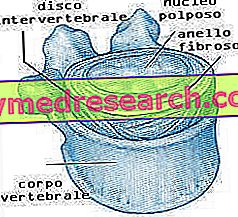See also: hunger, what do hunger attacks depend on?
What is thirst and what it depends on
Thirst is not a simple sensation, but an extremely important physiological stimulus that aims to keep the amount of water in the body in balance.
In an adult man the water constitutes about 60% of the body weight, a little less in the female organism (about 50%) due to a greater percentage of adipose tissue.

From a purely physiological point of view, the reflection of thirst is triggered in the presence of an imbalance between water and salts circulating in the blood; the reduction in the plasma volume (the liquid part of the blood) or the increase in the concentration of the dissolved salts, represents a clear warning signal; under these conditions it is essential to ensure an adequate supply of liquids from the outside.
Research and water intake is presided over by a particular hypothalamic region, known as the center of thirst and sensitive to the aforementioned stimuli. In this anatomical site there are specific receptors, called osmoceptors, which trigger the thirst reflex when the plasma osmolarity exceeds the standard values. The same reflex is inhibited, that is braked (absence of thirst) in conditions opposite to the previous ones.
In addition to hypothalamic control, various local factors, such as the dryness of the oral and pharyngeal mucosa, contribute to regulating the intake of liquids.
It is interesting to note that the act of drinking is in itself sufficient to calm thirst, at least temporarily. We realize this when we suck an ice cube, succeeding, despite the modest quantities of liquids introduced, to calm a particularly obstinate thirst. Even the dilation of the gastric wall helps to quench the thirst stimulus, avoiding an excessive decrease in osmolarity following an exaggerated intake of liquids.
But thirst, similar to hunger or better appetite, is not the result of simple physiological factors. The human being, in fact, is led to drink even in the absence of a real stimulus to thirst, for example due to certain cultural and social habits.
Thirst and health
It is important to remember, first of all, that the stimulus of thirst diminishes in the elderly. Hence the recommendation to drink at least one and a half liters a day - two liters of water, regardless of the perception of this stimulus.
The feeling of thirst is abolished following brain injuries and loss of consciousness. An increase in this impulse occurs instead in conditions of untreated diabetes and in the presence of a significant hemorrhage, due, respectively, to the increased fluid losses with urine (hyperglycemia-induced polyuria) and the decrease in plasma volume.
As is common experience, thirst increases greatly when practicing an expensive physical activity, especially if performed in warm environments. In this regard it is good to remember that if the subject replaces the lost liquids, with low fixed residual water, the plasma volume is restored but not its salt concentration, which is even diluted, aggravating even more the electrolyte deficit (hyponatremia). Precisely to counter this phenomenon, which in extreme cases can cause cramps, a significant reduction in performance and even become lethal, many beverages enriched with mineral salts are on the market. Among the supermarket shelves or in specialized shops, there are also powdered salt supplements that are always added to the drinks in the dosages shown on the label. When these are exceeded, in fact, the high concentration of salt in the intestine attracts fluids by osmotic gradient, removing them from the plasma, causing diarrhea and aggravating the state of body dehydration.



